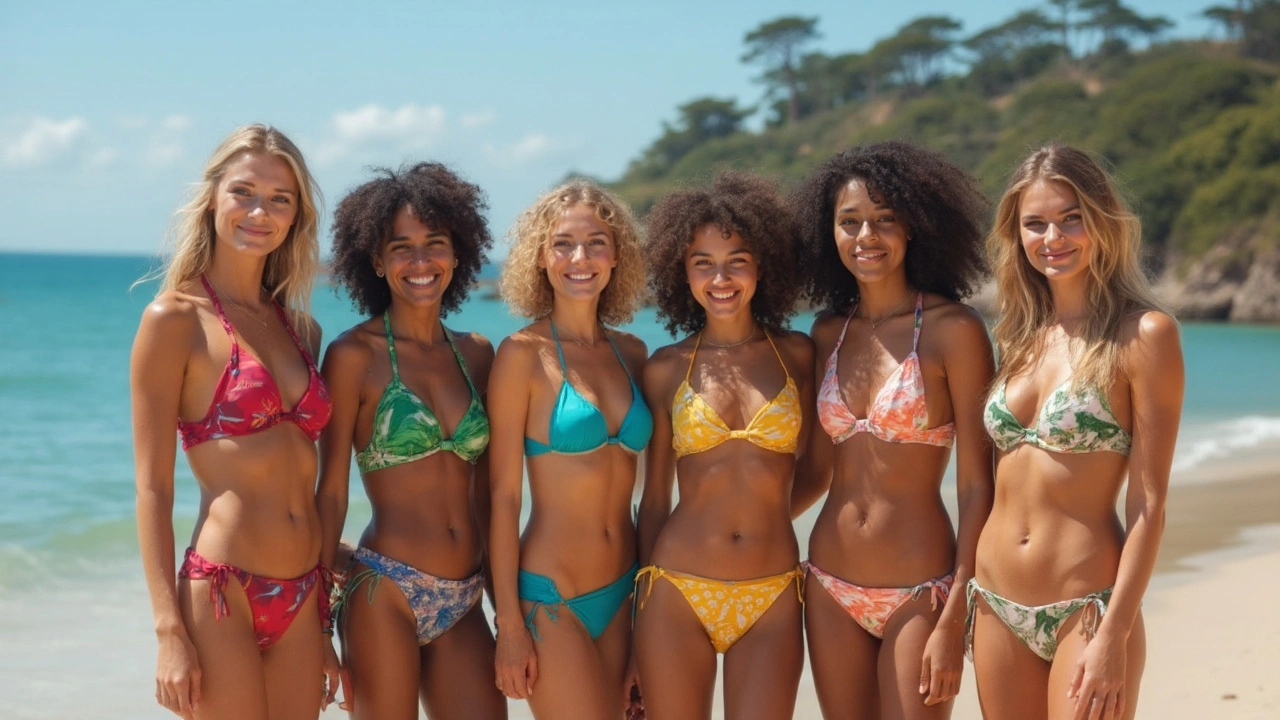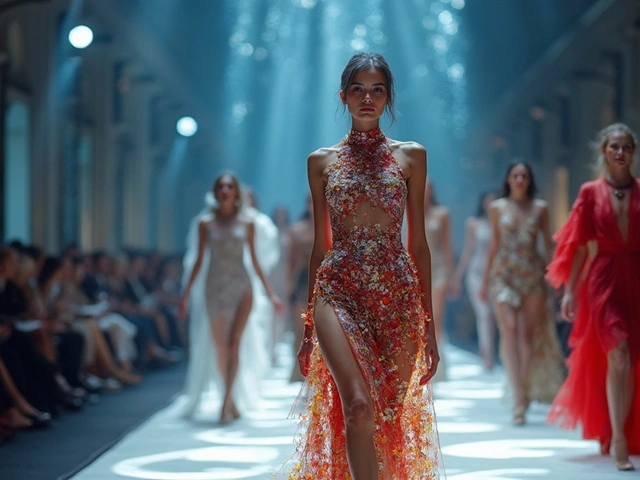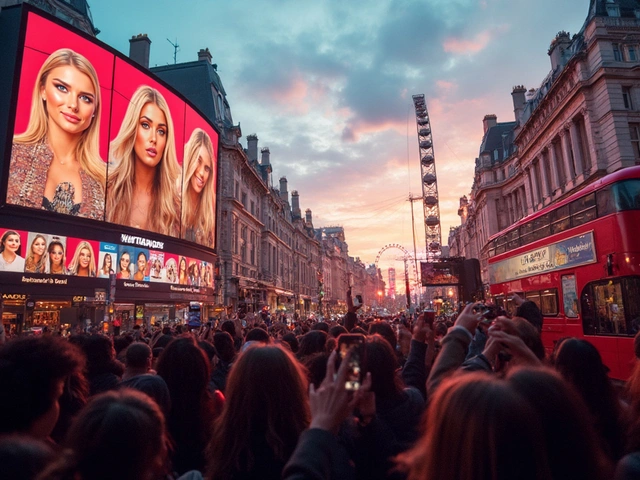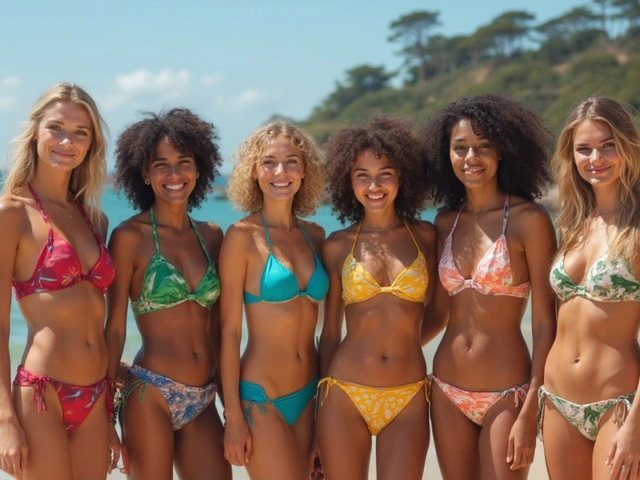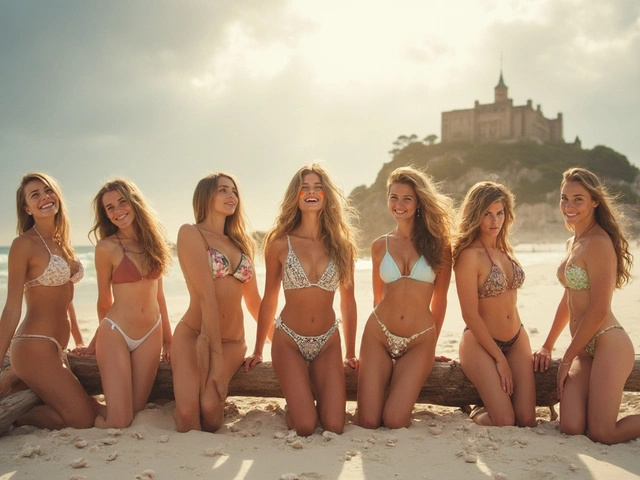Bikini models aren't just posing in pretty swimsuits—they're flipping the script on how we see fashion and the planet. It’s not just about the next trending print; it’s about the materials, the companies, and even the packaging behind every piece. You might be surprised to learn that some of the biggest names in modeling are outspoken about plastic waste, labor rights, and the crazy environmental costs of fast fashion.
So why does their role matter? Picture this: a single Instagram post from a popular model can drive thousands to check out a new eco-friendly brand overnight. They’ve got massive reach, and brands know it. Models can make or break what’s cool—not just for how a swimsuit looks, but for what it stands for. They’re asking questions most of us wouldn’t, like “Is this bikini made from recycled ocean plastic?” or “Who actually sewed this?” That focus can make the difference between just another disposable trend and a piece that lasts longer, both in your closet and the world.
- What Makes A Bikini Model Influential In Fashion?
- The Shift Toward Sustainable Swimwear
- Spotting Greenwashing vs. Real Sustainability
- How Bikini Models Use Social Media for Change
- Simple Steps for Fans to Support Ethical Swimwear
What Makes A Bikini Model Influential In Fashion?
A bikini model's pull in the fashion world comes down to more than just looking good in front of a camera. Brands know that when someone with millions of followers shows off a new style, sales can explode overnight. Take the case of models like Candice Swanepoel and Emily Ratajkowski—both used their platforms to launch or boost eco-friendly swimwear brands, and their audiences actually paid attention. This isn’t just hype; numbers back it up. A study in 2023 showed that 73% of Gen Z shoppers are influenced by what models and celebrities support on social media before they buy.
What really makes a bikini model influential today is how much trust they've earned with their followers. People are tired of fake, airbrushed content. They want real stories, genuine reviews, and proof that the model actually uses what they're showing off. When someone like Paloma Elsesser shares a behind-the-scenes video of how a swimsuit’s made—right down to the recycled materials or the people sewing in the labels—it sticks. Fans watch, learn, and start to care about things like sustainability or fair pay.
Here's how bikini models build real influence in the fashion world:
- Authenticity: Models who give honest takes—calling out fast fashion or praising small eco-brands—stand out and get more trust from followers.
- Reach: Some have audiences bigger than fashion magazines. One Instagram story could reach five million people instantly.
- Direct Engagement: They reply to comments, share personal stories, and give style tips that feel like a chat with a friend.
- Trendsetting: Models often set the vibe for the season, from the kind of prints to eco-friendly materials—followers jump on what they wear next.
The real impact also shows up in the numbers. Check out this quick table on the reach of popular bikini models and the brands they influence:
| Model | Instagram Followers (2025) | Eco-Brands Promoted |
|---|---|---|
| Candice Swanepoel | 22 million | Tropic of C |
| Emily Ratajkowski | 30 million | Inamorata |
| Paloma Elsesser | 1.5 million | Various |
Models are starting to care more about what they stand for, not just what they wear. When they push for less plastic, safer work, or recycled materials, their fans pick up those habits too. That’s how a single bikini can turn into a movement.
The Shift Toward Sustainable Swimwear
Let’s talk about how swimwear is getting a major eco-makeover. The spotlight isn’t just on bold colors or wild prints anymore. More brands and bikini models are choosing to work only with companies that put the environment first. This means ditching old-school, petroleum-based fabrics for smarter choices like recycled nylon, organic cotton, and even swimwear made from old fishing nets scooped up from the ocean.
A quick look at the numbers makes the picture clear. Traditional swimwear uses a lot of synthetic material, which takes hundreds of years to break down. But sustainable options not only cut down on plastic waste, they use far less energy and water in production. That’s a win for everyone, especially if you love the beach and want to keep it clean. Check out some facts below:
| Material | Water Used (per kg fabric) | Breakdown Time |
|---|---|---|
| Conventional Nylon | 100-150 liters | Up to 40 years |
| Recycled Nylon | 60 liters | Same, but made from waste |
| Organic Cotton | 50 liters | 1-5 years |
Another cool fact: Some brands literally track their supply chains. They make it easy for anyone—models or shoppers—to find out where a bikini was made and who made it. Bikini models who care about sustainable fashion have started to demand this level of transparency before saying yes to a campaign. They want to make sure their face isn’t tied to stuff that’s trashed beaches or hurt workers.
Switching to better swimwear comes with a few challenges, though. The cost of recycled fabric can be higher. Finding a brand that’s really walking the talk (and not just pretending for marketing) can take some digging. But this is exactly where models have started to draw a line. They’ll turn down projects that don’t match their values, making eco-friendly bikinis stand out—sometimes even more than the models wearing them.
If you want to spot truly ethical swimwear the next time you do some online shopping, look for the following:
- Clear labeling—recycled or organic fabrics listed up front
- Brands offering info about factories and fair labor
- Certifications like GOTS, Fair Trade, or OEKO-TEX
- Minimal packaging or packaging made from recycled material
At the end of the day, the whole idea is simple: wear something that feels good, looks good, and does good. That’s the shift that’s shaking up swimwear right now.

Spotting Greenwashing vs. Real Sustainability
The buzz around sustainable fashion keeps growing, but not every brand putting a leaf or the word "eco" on a bikini tag is the real deal. Greenwashing is when companies make things sound greener or more ethical than they really are. This problem isn’t rare—studies show over 40% of green claims from fashion brands in 2023 were either exaggerated or outright misleading. So, if bikini models want to support genuine progress, they (and we) have to tell the truth from the hype.
Spotting real sustainability takes a bit of detective work. Here are some quick checks that actually work:
- Check for Proof: Look for third-party certifications like GOTS (Global Organic Textile Standard), OEKO-TEX, or Fair Trade. These aren’t just nice logos—they mean the brand passed some solid tests.
- Materials Matter: True eco-friendly brands use organic cotton, recycled polyesters, or regenerated nylon (like ECONYL). If the tag only says “eco” or “conscious” but no details, that’s a red flag.
- Honest Info: Clear info on the brand’s website about how things are made, who makes them, and what happens at the end of a swimsuit’s life. Vague or missing info? Probably not so sustainable.
- Real Impact: Does the company share reports or stats on how much water, energy, or plastic they save? Or do they just talk about planting trees “someday”?
Some brands try to sound clean, but when you dig in, you won't find any actual numbers or third-party checks. That's where models can call out the difference, and followers listen.
| Red Flag (Greenwashing) | What to Look For (Real Sustainability) |
|---|---|
| Vague claims: "Eco-friendly fabric" | Specific materials: "ECONYL® regenerated nylon, GOTS-certified organic cotton" |
| Only in one product line | Brand-wide sustainability efforts |
| No third-party certifications | Certifications shown clearly |
| Glossy marketing, few details | Transparency: Detailed supply chain info |
| Promises about future goals only | Current, measurable impact reports |
Here’s a quick tip: if a brand spends more space bragging about being green than explaining exactly how they do it, your greenwashing radar should be up. Bikini models making a real difference call out those details in posts or Q&As, helping their fans make smarter choices. It’s all about rewarding the brands that actually walk the talk.
How Bikini Models Use Social Media for Change
It’s almost wild to think about how much bikini models can do with just one post or story. Instagram, TikTok, and even YouTube have become megaphones for getting people to care about ethical fashion. Models like Candice Swanepoel and Iskra Lawrence have openly shared their sustainable swimwear hauls, tagging brands that are transparent about where and how their pieces are made.
Here’s a cool fact: in 2024, sales of eco-friendly bikini brands shot up by 40% after a series of TikTok videos went viral, highlighting swimsuits made from recycled plastics. That’s real, measurable change sparked by people with enough followers to fill a football stadium (or ten).
Models aren’t just showing off new looks; they’re creating “behind-the-label” stories, showing fans the supply chain, talking about labor rights, and even calling out brands for greenwashing. That authenticity gets people thinking before buying. Fans see a favorite model take a stance and suddenly want to ask, “Wait, is my closet eco-friendly?”
- Some models do “brand audits” live, breaking down which brands walk the talk when it comes to sustainability.
- There are regular #SustainableSwim challenges where models post only eco-friendly looks for a month, showing just how much choice is actually out there.
- They link to resources, share discount codes for ethical swimwear, and even host Q&A sessions so followers can ask where to shop smart.
This influence doesn’t go unnoticed. The head of Eco-Age once said:
“When models spotlight sustainable fashion on social media, you see brands and buyers change their habits—almost overnight. It’s a kind of domino effect.”
So, next time you scroll past a bikini shot, check the caption. If a model is raving about a brand’s recycled fabrics or plastic-free tags, take the hint. They’re not just there for the likes—they’re pushing real change, and that can rub off on all of us.
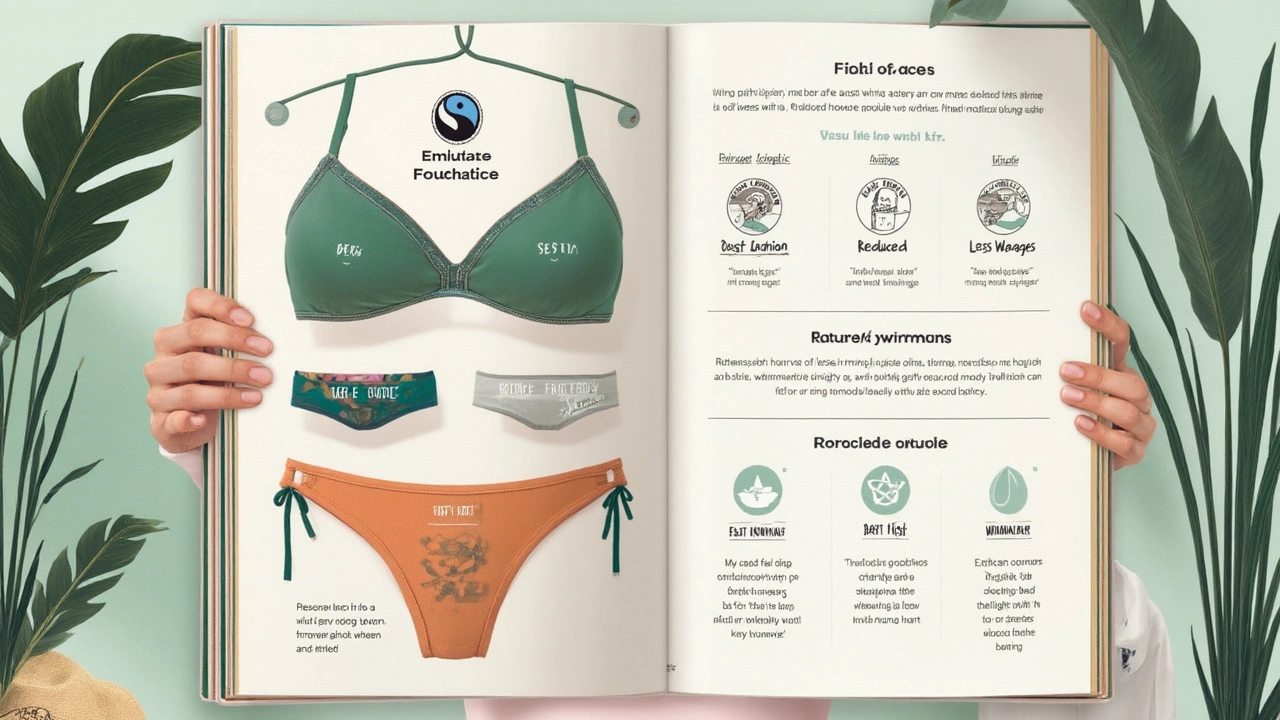
Simple Steps for Fans to Support Ethical Swimwear
Getting into ethical swimwear doesn’t require deep pockets or industry connections. Every fan can make a difference just by making smarter choices and spreading the word. If you’ve ever wondered how you can chip in, try out these easy steps that actually matter.
Bikini models and sustainable brands rely on regular people to hold companies accountable. Supporting the good guys in the swimwear world means thinking about more than just the hottest cut or color on Instagram. Here’s what you can do, right now:
- Check the label: Always look for clear info about recycled fabrics, organic cotton, or certifications like OEKO-TEX® or GOTS. Brands using ECONYL® — made from recycled ocean plastic — usually put it front and center.
- Follow and share ethical models: When you see a model openly talking about where their swimwear comes from, hit follow, like, or share. Your feed can actually help boost ethical brands.
- Ask questions: Don’t be shy to message a brand about where and how their products are made. Brands that care will answer clearly.
- Read brand impact reports: Some companies, like Vitamin A Swim, post yearly reports about water use, labor standards, and more. Checking these out takes a minute and tells you who’s really walking the walk.
- Buy less, choose well: The less you buy, the bigger your impact. Pick one or two quality pieces that last instead of a new one every year.
Let’s compare a few popular certifications that actually mean something for the planet and workers:
| Certification | What It Means |
|---|---|
| OEKO-TEX® | Tests for harmful chemicals in fabrics |
| GOTS | Global Organic Textile Standard—ensures organic origin and fair labor |
| ECONYL® | Made with recycled ocean and landfill plastic |
Don’t just take my word for it. According to Kerry Bannigan, founder of Conscious Fashion Campaign,
"Consumer awareness is pushing brands to go further with sustainability, making transparency and ethics a new standard in fashion, not just a trend."
If you ever feel like one person can’t make a difference, remember: every purchase is a vote. And in fashion, the loudest voices often don’t come from the big brands—they come from us, the fans who care about what’s behind the label.
